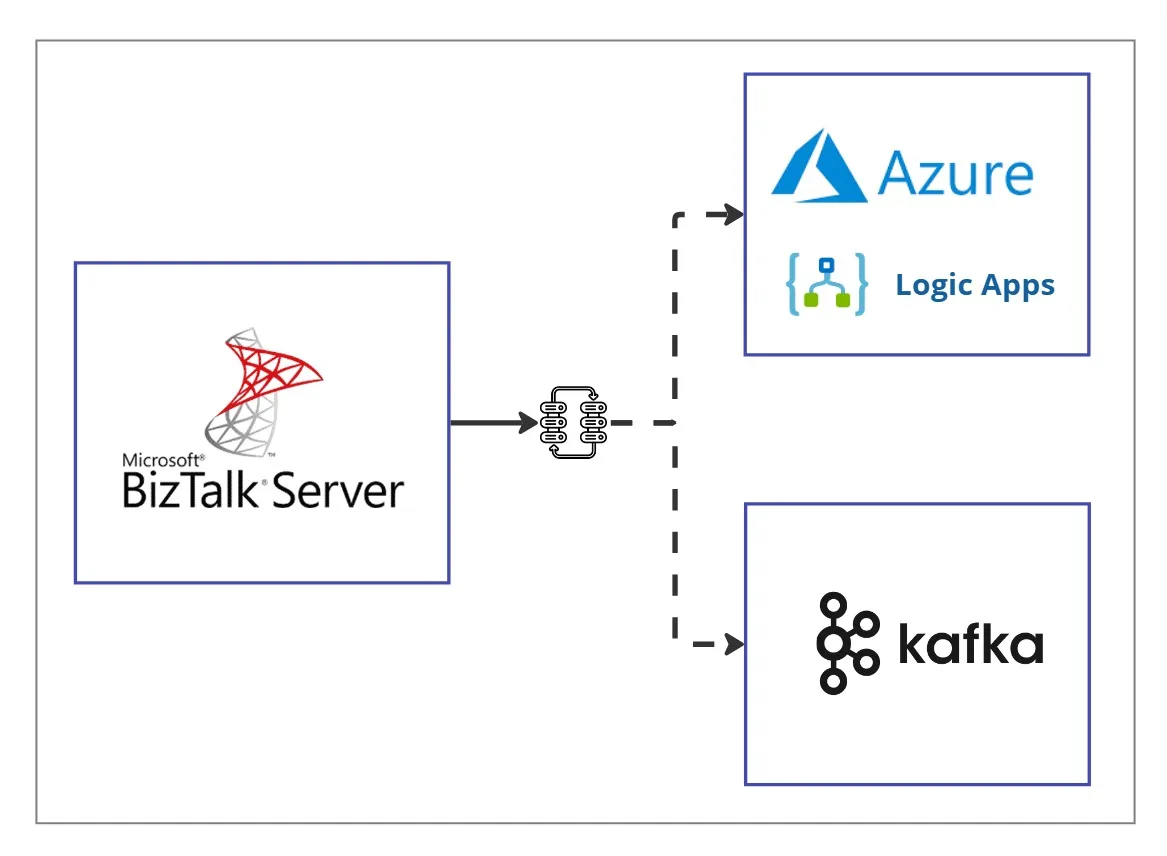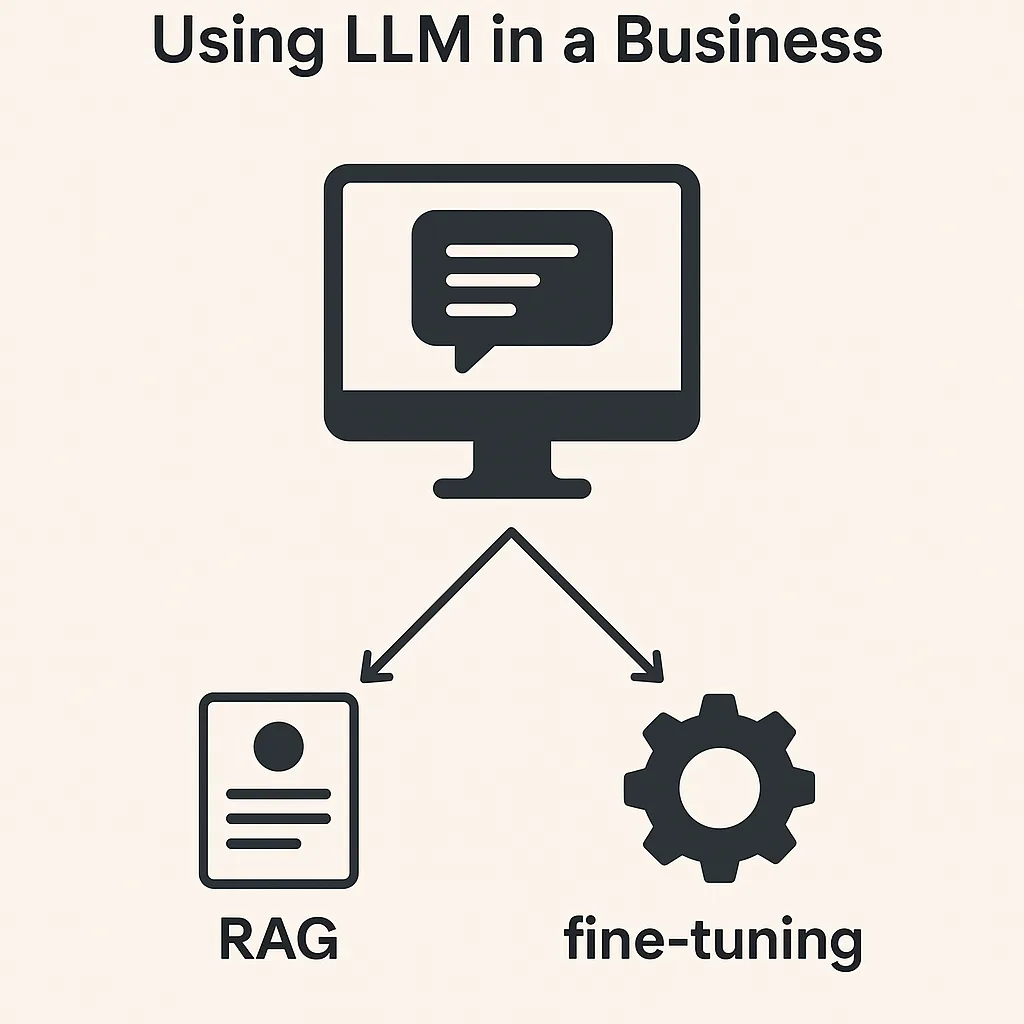Introduction
Migrating from BizTalk Server is not just about finding another integration tool—it’s about rethinking how integrations are built. This article introduces Kafka not merely as a data pipeline but as a transformative middleware solution that redefines the integration landscape.
Unlike traditional middleware, Kafka’s event-driven architecture and distributed nature offer scalability, resilience, and flexibility, making it a compelling alternative to both BizTalk and Logic Apps.
While Microsoft’s Azure Logic Apps offers a natural progression, Apache Kafka presents an open-source, scalable alternative. This article explores both options, helping developers and architects make informed decisions.
Kafka as an Integration Middleware, Not Just a Data Pipeline
While Kafka is widely recognized for its role in data streaming and pipelines, it is equally powerful as an integration middleware application. Kafka’s event-driven architecture allows it to serve as a backbone for system integrations, replacing traditional middleware like BizTalk. With features such as persistent messaging, scalability, and tools like Kafka Connect and Streams, Kafka facilitates seamless communication between disparate systems, offering a modern alternative to legacy middleware solutions.
Why Migrate from BizTalk?
- End of support concerns
- Need for scalability and cloud integration
- Reducing licensing costs
- Embracing modern architectures
BizTalk to Logic Apps: The Default Path
Benefits:
- Seamless integration with Microsoft Azure services.
- Low-code development with pre-built connectors.
- Managed service with built-in scalability.
Challenges:
- Licensing and cloud costs.
- Vendor lock-in.
- Potential complexity in hybrid cloud/on-prem scenarios.
BizTalk to Kafka: An Open-Source Alternative
Migrating from BizTalk to Kafka offers enterprises an open-source solution that eliminates licensing costs while providing unmatched scalability and fault tolerance. Kafka’s distributed architecture ensures high availability and resilience, even under heavy loads. Unlike BizTalk, which relies on SQL Server for message persistence, Kafka uses a distributed commit log for durable storage, making it ideal for event-driven systems. With Kafka Connect, enterprises can integrate with a wide range of systems, though it requires more engineering effort compared to BizTalk’s out-of-the-box adapters. Additionally, Kafka’s active open-source community continuously enhances its capabilities, ensuring long-term support and innovation.
Benefits:
- Highly scalable and fault-tolerant.
- Open-source with no licensing fees.
- Event-driven architecture ideal for modern applications.
Challenges:
- Requires engineering effort to build integrations.
- No native connectors like Logic Apps.
- Higher operational complexity.
Kafka as Middleware: Redefining the Integration Landscape
Kafka is not just a data pipeline tool; it is a robust middleware platform that facilitates seamless integration across distributed systems. Its publish-subscribe model allows multiple systems to communicate asynchronously, ensuring high decoupling and flexibility. Kafka Streams enables in-flight data transformations, similar to BizTalk orchestrations, but with greater scalability.
Kafka’s Schema Registry ensures data consistency across microservices, a challenge often faced in BizTalk integrations. Moreover, Kafka’s durability ensures that no message is lost, even during system failures, making it a reliable choice for mission-critical integrations. Enterprises can leverage Kafka to build scalable, real-time integration solutions that align with modern architecture practices.
- Message Brokering: Decouple producers and consumers.
- Durability: Persistent message storage.
- Scalability: Horizontal scaling without performance degradation.
- Integration Tools: Kafka Connect, Kafka Streams, and Schema Registry.
When to Choose Logic Apps vs. Kafka
- Choose Logic Apps if: You need quick integration with Microsoft services, prefer low-code development, and have cloud budgets.
- Choose Kafka if: You need an open-source solution, handle large-scale real-time data, and prefer an event-driven architecture.
Mapping Artifact Terminologies Between BizTalk Server, Logic Apps, and Kafka
Below is a comparison table mapping the key artifacts between BizTalk Server, Logic Apps, and Kafka.
| Artifact/Concept | BizTalk Server | Logic Apps | Kafka |
|---|---|---|---|
| Message Schema | Schema (XSD) | JSON/XML Schema | Schema Registry (Avro/JSON) |
| Pipeline | Receive/Send Pipelines | Built-in Connectors/Actions | Kafka Connect (Source/Sink) |
| Orchestration | Orchestrations | Workflows | Kafka Streams/KSQL |
| Adapter/Connector | Adapters | Connectors | Producers/Consumers |
| Port/Endpoint | Receive/Send Ports | Triggers/Actions | Topics (Input/Output Channels) |
| Tracking | BAM (Business Activity Monitoring) | Log Analytics/Monitoring | Kafka Offset/Monitoring Tools |
Pros and Cons of Migrating from BizTalk Server to Logic Apps or Kafka
| Migration Path | Pros | Cons |
| To Logic Apps | – Seamless Azure integration | – Licensing and subscription costs |
| – Low-code development | – Vendor lock-in to Microsoft ecosystem | |
| – Managed service with auto-scaling | – Limited flexibility for non-Microsoft services | |
| To Kafka | – Open-source with no licensing fees | – Higher engineering effort and complexity |
| – Highly scalable and fault-tolerant | – Lack of built-in connectors | |
| – Event-driven architecture suitable for microservices | – Requires strong operational knowledge |
Conclusion
Migrating from BizTalk to modern platforms like Kafka or Logic Apps provides enterprises with scalability, flexibility, and cost-efficiency. Kafka stands out as an open-source, event-driven middleware solution that ensures reliable, real-time data processing across distributed systems. Logic Apps offers seamless cloud integration with low-code development, making it suitable for rapid deployments within the Microsoft ecosystem.












